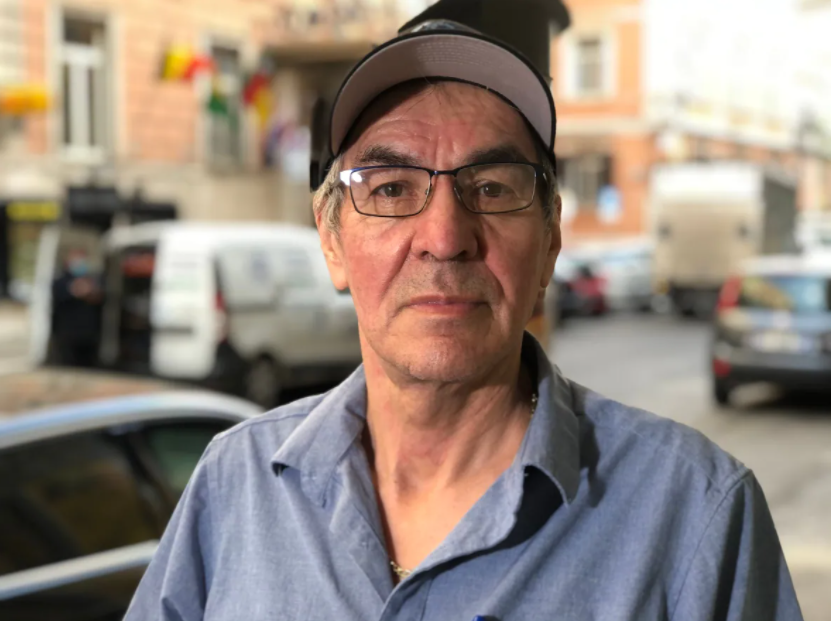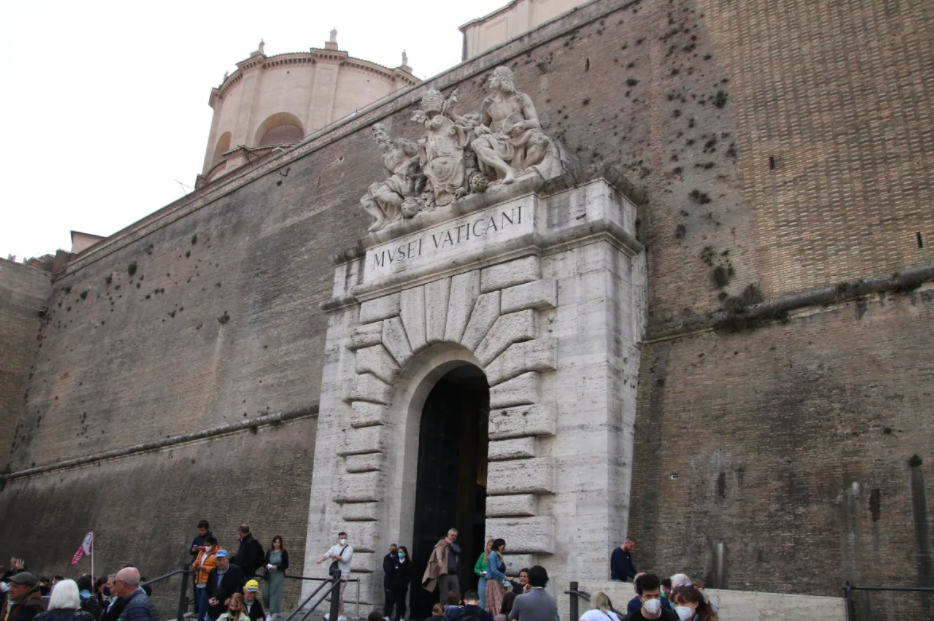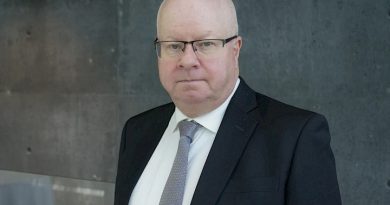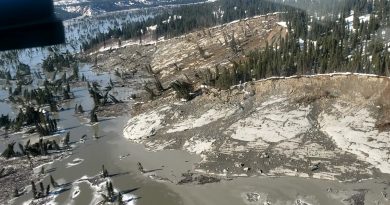Canadian Inuit leader says Vatican Museums open to repatriating Indigenous artifacts
The Vatican Museums hold a vast collection of Indigenous artifacts from countries such as Canada, causing concern for Indigenous delegates in Rome who wonder how these items ended up in the Vatican’s possession. 2:04
Many of the Indigenous delegates meeting the Pope this week finished a private tour of the Vatican Museums yesterday disappointed, but the leader of the Inuit delegation says he was told by the curator of the Ethnological Museum that the Vatican is open to returning precious cultural belongings it has in its possession.
Natan Obed, president of the Inuit Tapiriit Kanatami (ITK), met with Father Nicola Mapelli for a couple of hours at Obed’s request after touring the museums, including the Sistine Chapel and some of the Indigenous cultural items from Canada in a new Anima Mundi exhibit that is not open to the public yet.
“The curator was quite open to any scenario that we proposed, including repatriation,” Obed said.
“Nothing is off the table, as they have said to us.”
The delegates saw just a portion of the Vatican’s collection of Indigenous pieces, including a rare kayak about a century-old from Inuvialuit in the Western Arctic.
ITK board member Duane Smith, who is also the chair and CEO of the Inuvialuit Regional Corporation, last year called on the Vatican to return the kayak to Inuit. Smith declined to join this month’s delegation to Rome.
During Obed’s conversation with Mapelli, the curator spoke about how the Vatican Museums worked with a number of different Indigenous Peoples, most recently in Australia, to decide what’s best for the pieces that the Vatican has in its holdings, Obed said.
Curator describes kayak records to Natan Obed
The backstory of how the kayak got to the Vatican is still a mystery.
The Vatican says it was part of a 1925 exhibition of tens of thousands of Indigenous cultural artifacts sent in by church missionaries from around the world, but the question of who made it, which community it came from and whether it was gifted is still unclear.
Obed doesn’t know all the details but was told it was part of a call for examples of cultural expression against fascism, nazism and racism in the early 20th century.
“The kayak is beautiful,” Obed said. “It is a wonderful expression of our culture and craftsmanship, and it was really nice to see it.”
WATCH | Métis and Inuit leaders describe meeting Pope Francis:
Two leaders of the Indigenous delegation in Rome describe their experiences meeting Pope Francis for historic reconciliation talks and what they hope will come out of the discussions. 6:10
Mapelli has some records that show the kayak came from Edmonton before it went to Vatican City by boat across the Atlantic Ocean and didn’t show any visible signs of wear once it arrived.
Obed said further conversations need to take place on what happens next to the kayak and other cultural pieces, which includes connecting Mapelli with Smith.
“I do hope that the best possible decisions can be made about these pieces, which are important,” Obed said.
Other delegates, who want to see their cultural pieces repatriated, are upset with the way the Vatican is showcasing their history and are demanding to be involved in decisions moving forward.
No mention of residential schools at Indigenous exhibit
First Nations delegate Norman Yakeleya, whose traditional last name is Yakeula, from the Dene Nation in the Northwest Territories said he was disturbed after seeing a sacred ceremonial pipe the Vatican exhibited.
“I’ve been told by some elders that it’s not for show,” Yakeleya said. “It was there on display, and it was something that I didn’t feel good about.
Yakeleya says the artifacts should be repatriated to their rightful owners: the ceremonial people.
“They can make plastic models if they want, but give us the real thing,” Yakeleya said.
“For God’s sakes, give them back to our people.”

Yakeleya is a residential school survivor who attended the Roman Catholic-run Grollier Hall in Inuvik, Northwest Territories.
When he walked into the school’s doors at the age of five, he was given a number that was put on his shirts and glasses.
One of the numbers he was given over the eight years he attended Grollier Hall was 153.
“If they called 153, I’d have to put my hand up, and that’s how they would identify me,” Yakelaya said.
“Where in the world would they do that to a human being?”
WATCH | The cultural importance of Indigenous artifacts at Vatican Museums:
Curator and professor Gerald McMaster, explains to Canada Tonight’s Ginella Massa why the Indigenous artifacts in the Vatican museum are so important to Indigenous people and to the process of reconciliation. 6:40
Yakeleya was also disappointed the new Anima Mundi exhibit didn’t include any mention of the residential school system in Canada, day schools or racially segregated Indian hospitals.
“They’re not showing the history of why we’re here,” Yakelaya.
“A lot of people go through the Vatican museum, but they should also know there’s a dark side that they got to be exposed to.”
Métis leader ended tour ‘quite empty and unfulfilled”
Officials with the Vatican Museums said in a statement that management “prefers not to respond” to questions about the Indigenous cultural belongings in the museum’s possession.
But the Canadian Conference of Catholic Bishops said Mapelli spoke to the delegates about his desire to work with them to learn more about the artifacts from Canada, seek their guidance about what should be returned to local communities, and what should be shared with the museum’s seven million annual visitors.
Cassidy Caron, president of the Métis National Council (MNC), asked the Canadian Conference of Catholic Bishops before the trip to Rome to work with the museum to obtain a list of all the Indigenous artifacts but didn’t receive one.
“I felt quite prepared going in there,” Caron said.
“When we arrived, really, I was quite disappointed … We didn’t get the opportunity to go and to find our articles and to start identifying what actually might be there.”

There was no glass protecting the items and little information that explained the stories behind them.
Caron said MNC wants to catalogue all the items and identify community members who can tell the stories behind the cultural belongings and a pathway to bring them home if that’s what their communities desire.
“It left me feeling quite empty and unfulfilled,” Caron said.
One of the directors of the museums kept repeating to delegates that the cultural items do not belong to the Vatican but that the museums are the custodians of the items, Caron said.
“I just kept thinking to myself, ‘Well, why can’t we be the custodians of our own items?'” she said.
Related stories from around the North:
Arctic: Inuit artists in their own words, Eye on the Arctic
Canada: Canadian researcher challenges Vatican’s claim that its Indigenous artifacts were gifts, CBC News
Finland: Sami Parliament in Finland agrees more time needed for Truth and Reconciliation Commission preparation, Eye on the Arctic
Norway: Sami education conference looks at how to better serve Indigenous children, Eye on the Arctic
Sweden: Sami in Sweden start work on structure of Truth and Reconciliation Commission, Eye on the Arctic
United States: Alaska reckons with missing data on murdered Indigenous women, Alaska Public Media



